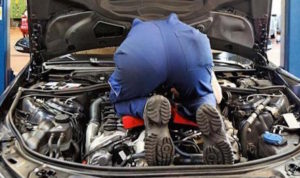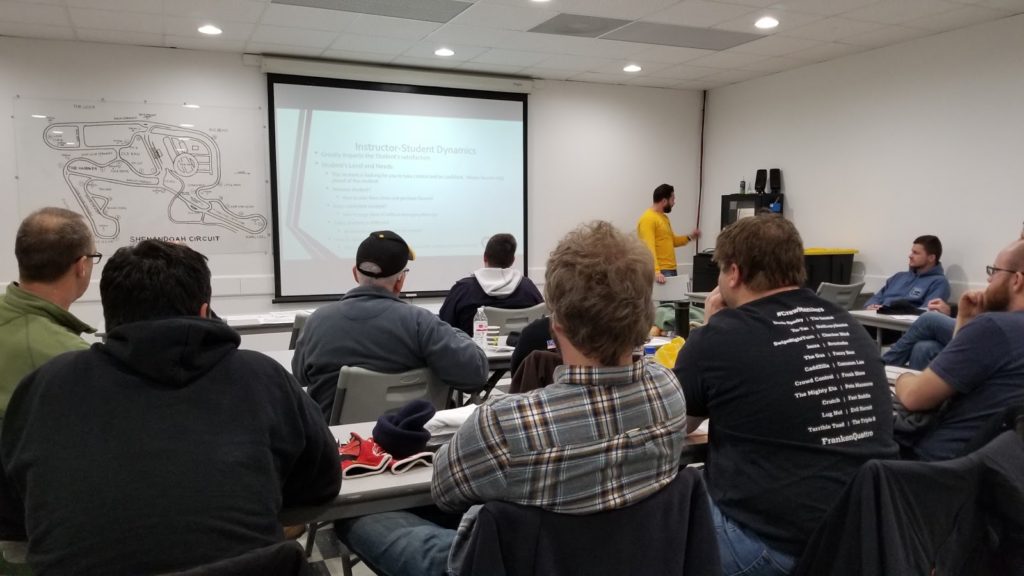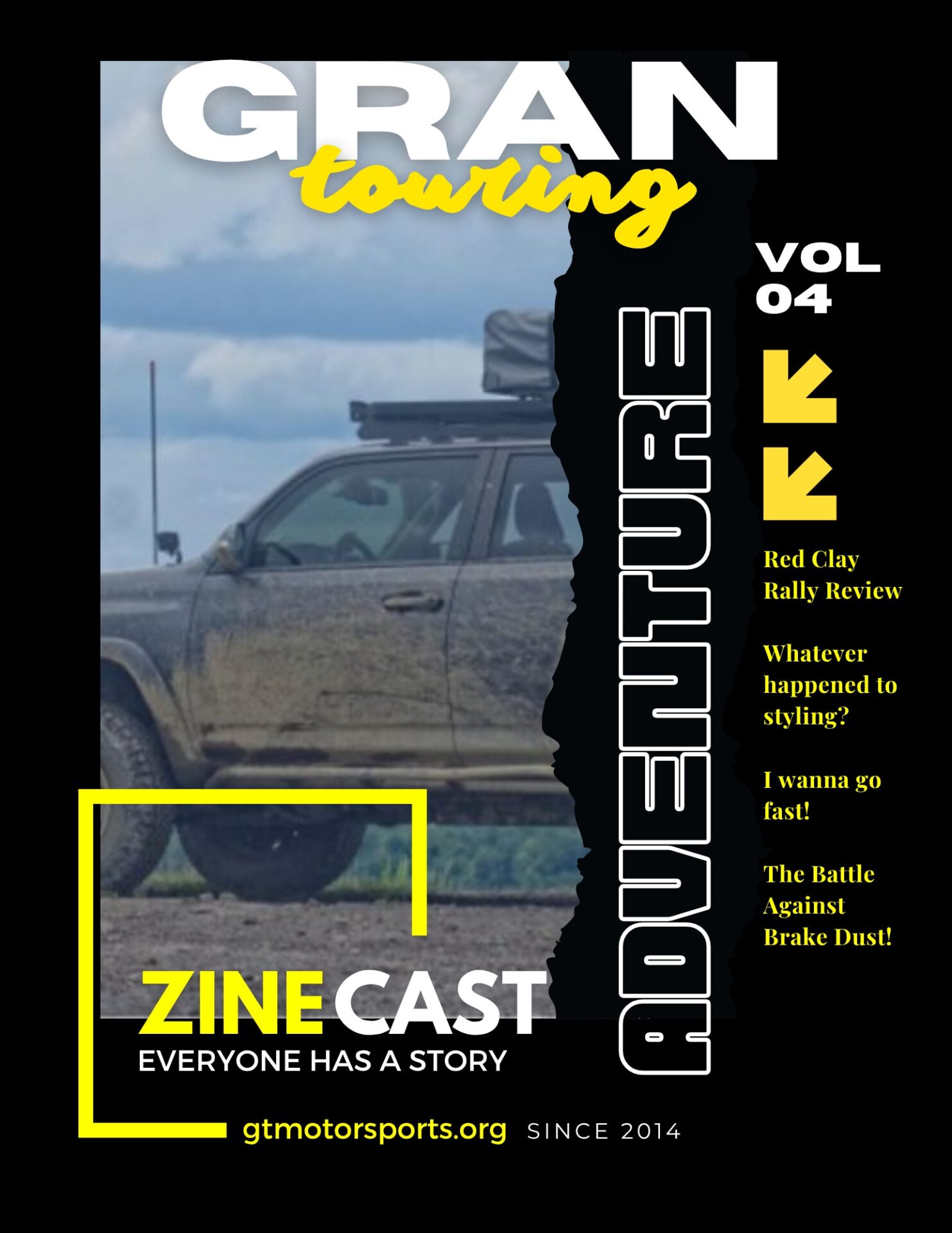Hello there fellow car enthusiast! I see you just bought your dream car and you are ready to live out your Cole Trickle fantasies on a real race track! Ready to put that Ricky Bobby motto to the test and “shake and bake” your way right into the winner’s circle! Good for you! Or maybe not, maybe you just want to become a better driver and and see what you are made of personally.
Tune in everywhere you stream, download or listen!
Whether you think you are ready to go out and win Daytona or you just want to run your fastest laps and beat your personal best, you have to actually drive on a race track first. That’s why I’m here… this article is going to highlight the things I wish I knew before going to my first track day/weekend.
What to do before the event
Registration – Before you can get out there and “let a rip, tater chip” you need to find an event that works for you and your schedule. The best resource for this is MotorSports Reg (MSR). Many (not all) of the clubs use this site to list their events throughout the year and most will let you register for the event right from the site.
Some clubs are a bit special in the registration department and require you to go to their individual site to register but their events are still listed on MSR. And then there are some very special snowflakes that don’t even list their events at all on MSR and rely solely on their own website for schedules and registration completely. My suggestion to you is to first pick a date, or a couple alternatives, for when you have time in your schedule to go, then pick a track you want to run (in this area the closest tracks are Dominion Raceway in VA and Summit Point Raceway in WV).
You can check the track’s website first and see if they are running events that day and which club is running it, OR you can go to MSR and find a club that is running on that track. For the special snowflakes, they are a bit harder to find. Thankfully you have me to point you in the right direction. Hooked On Driving and Chin Motorsports are two examples.
Track Insurance
So, you have found your track day and you are registered. Way to go! But the decisions are not done yet, now you need to decide on track insurance. Most, if not all, auto insurance companies DO NOT cover any types of claims as the result of you driving on a race track. They may have clauses in your existing policy that prohibit you from even driving on track. It is wise to check your policy documents very carefully to make sure you aren’t in breach. My car is not registered for the street so I do not have this problem, but you should be aware of the risks you could face.

Anyway, back to track insurance. Because your insurance company will most likely not cover you in the event of an incident, there are options out there for you to insure the car on track. We wrote an article not to long ago about one such company, Lockton Insurance. A few of our members use this company and have had great experiences. If insurance is something that would give you piece of mind while on track, then please look into getting a policy for the event.
Pre-Track Day Tech Inspection
Now that you have registered and decided whether or not you need track insurance, it’s time to focus on the car. Some (but not all) clubs require a tech inspection of your car with a form that needs to be completed by a licensed mechanic. Clubs that require this are Audi Club (ACNA), Porsche Club (PCA), and Sports Car Club of America (SCCA) as an example. Please note SCCA allows for a “self tech” option where you can sign off on the inspection for yourself.

The inspection goes over the basics of your car and just touches on whether the car is operating properly and is in good working order for a track day. Some of the things the mechanic will check: tires, brake pads and rotors, brake fluid, check for any leaks, proper safety gear (seat belts are operating properly), no play in the steering and suspension, brake lights and turn signals all work etc. Pro Tip: Whether the club requires an inspection or not, it is important to inspect your car before any type of performance driving whether it be a track day or autocross, whatever. This can save you a lot of headaches in the future if you can catch something wrong before getting to the track. Once your car has been given a clean bill of health, you are ready to go!
What To Bring With You
Well, not so fast. You are registered and your car is good to go, but now you need to prep. Below is a list of items that I feel are important to bring with you to any track day:
Proper clothing – jeans are great or any pants that are known for being less flammable than other materials. A long sleeve shirt is still required for some clubs. Socks and comfortable thin soled shoes are a must. (Adidas Sambas or Converse All-Stars are good cheap cheap alternatives to driving shoes). You want to be comfortable and you want to be able to drive the car without any issues. Also bring a jacket or sweatshirt for temperature changes or rain.
A Helmet – some clubs will provide a helmet to you for a small fee if you don’t have one. Also OG Racing in VA rents them out. A motorcycle helmet is not allowed.
Gloves – these aren’t required but they are useful since you will be sticking your hand/arm out the window for point bys. Something bright colored and easy to see are best.
Food and Drinks – water, sports drinks, anything to keep you hydrated. Driving a car is hard work and you will exert a lot of energy. It’s best to stay well hydrated and fed. Make sure you eat a good breakfast and bring food for lunch. Some tracks have food and some clubs even provide food for you for lunch and dinner (ie: Hooked on Driving).
Tools – You are going to want to bring some basic tools with you, jack, jack stands (2 should suffice), torque wrench, sockets and wrenches needed to change your wheels, tools needed to change your brake pads/rotors, tire gauge: these are the basics.
Extra Parts – extra brake pads, brake rotors, oil and engine coolant, etc. Might not be terribly necessary for your first time out but hey, track days are expensive and you don’t want to miss time because you ran out of brake pads.
Miscellaneous – bring blue painters tape in case you need to put numbers on your car. And bring a liquid paint pen, white shoe polish or chalk to mark your tires. Your instructor can explain why this is important. You don’t need to worry about fuel as most tracks have fuel tanks there (for example: Dominion has a gas station right across the street from the main entrance). However you might want to bring an air compressor in case you need to fill your tires. Not all tracks have air.
A Great Attitude – One thing you should leave at home is your ego. No one is Michael Schumacher or Lewis Hamilton, especially at their first track day. Come happy and positive with a desire to learn and be taught, because you will learn something about yourself and about your car. DO NOT come with a bad attitude or a chip on your shoulder. “I know how to drive, because I play Forza” … A good instructor can sniff that out a mile away and you will be sent home, sometimes without a refund. If you are nervous or timid, that’s OK! It’s scary going to your first event, especially by yourself, but everyone there will be friendly and willing to help the new guy/gal. We want you to have a good time and we want you to want to come back!
Friends – Lastly, you don’t have to be alone, bring your friends, preferably to drive their own cars even (the more the merrier). Bring your families! Instructors can usually take people out for a few laps without totally disrupting their day and most clubs allow parade laps during lunch time (time on track without a helmet at safe slower speeds). Take advantage of this to get other people enthused about your hobby!
The Day Of The Event
Your schedule – It’s time, the day of the event is here. You got a good night’s rest and had a healthy and filling breakfast. You are ready to go! The first thing you will do is arrive at the track and complete the registration process. Just get in line, head up to the table and let them know you are there. They will give you numbers if your car doesn’t already have them (if not, use blue painters tape to make easy numbers that won’t damage your paint). They will also give you a schedule. This schedule is your bible for the day/weekend. Please be on time for everything, especially the driver’s meeting (usually starts at 8:00am) and your classroom sessions. If you are not on time, you are only hurting yourself. Now for some important things, your day will be broken into classroom sessions and on-track sessions.

Classroom – The classroom sessions are meant to teach you about the safety concerns of being on track as well as to teach you what each of the different flags mean and proper driver etiquette for point-bys and pitting. The classroom sessions are very important. DO NOT MISS THEM. After your classroom you will go out on track with your instructor. After your track sessions you will have more classroom sessions meant to teach you a little more and debrief about your experiences during your on-track session.
Instructors – Your instructor is the brave soul willing to get in the car with you, a complete stranger, in a high stress and dangerous situation and try to teach you while at the same time keeping you, and them, safe. Your instructor is a volunteer, they are not getting paid to be there (not monetarily anyway) and they are taking time out of their day to help you. Be nice to your instructor and listen to them. They have the experience that you lack at this point. Their goals are to make sure you are safe and to make sure you have fun and learn something. However, if you have an instructor that you don’t click with personality wise, don’t be afraid, kindly ask if you can have a different instructor. Not everyone will get along with each other, that’s human nature. But you don’t want to have a ruined weekend because you didn’t like your instructor and you felt stuck. Trust me, I made this mistake and almost gave up entirely.

On-Track Sessions
FINALLY! The fun part! You get to show off your Ricky Bobby skills and run circles around all the other noobs out there. Well, not so fast there Dale Jr. You gotta learn the basics. The on-track sessions are where you and your instructor will go over what you learned in the classroom and you will apply those skills and teachings in a real world environment.
Yes you can drive as fast as you can (safely!!! Do not over-drive the car and listen to your instructor!) but remember to apply what you learned in the classroom and be willing to learn the proper line, situational awareness, correct passing maneuvers, where the flag stations are, what the flags mean, proper braking techniques, proper throttle application, proper shifting, keep your head and eyes up, be courteous and PREDICTABLE to the other drivers on track, etc. Does that sound like a lot? That’s because it is a lot.
There is a lot going on when you are driving and you need to be mindful and aware of all of it. However, go at your own pace. You and the other novices are all out there to have fun. If you are super fast compared to your group, just be patient and pass where it’s designated and pull into the pits if necessary. If you are the slow one out there, THAT’S OK! Take your time and work on your line. If you have traffic behind you, acknowledge them and let them by when you can, if you are causing too much traffic, pull into the pits and let them go by. Your instructor will notice all of these things and have you act accordingly. Don’t worry, you will have fun and so will everyone else!
In-Between Sessions – There will still be some down time between your classroom sessions and on-track sessions. Take this time to rest, speak with your instructor, hang out, refuel your car and your body, and check over the car (tire pressures, treadwear, brake pad wear, oil and coolant levels, etc.).

So that’s it, those are my tips and a summary of how your first track day should go. Obviously, some things may be different depending on the club you run with and the track, but don’t fret, most clubs all operate about the same. The most important things to remember are to have fun and be safe. Be willing to make some new friends because you are going to gain a ton!
Happy Motoring and Never Stop Learning!
























